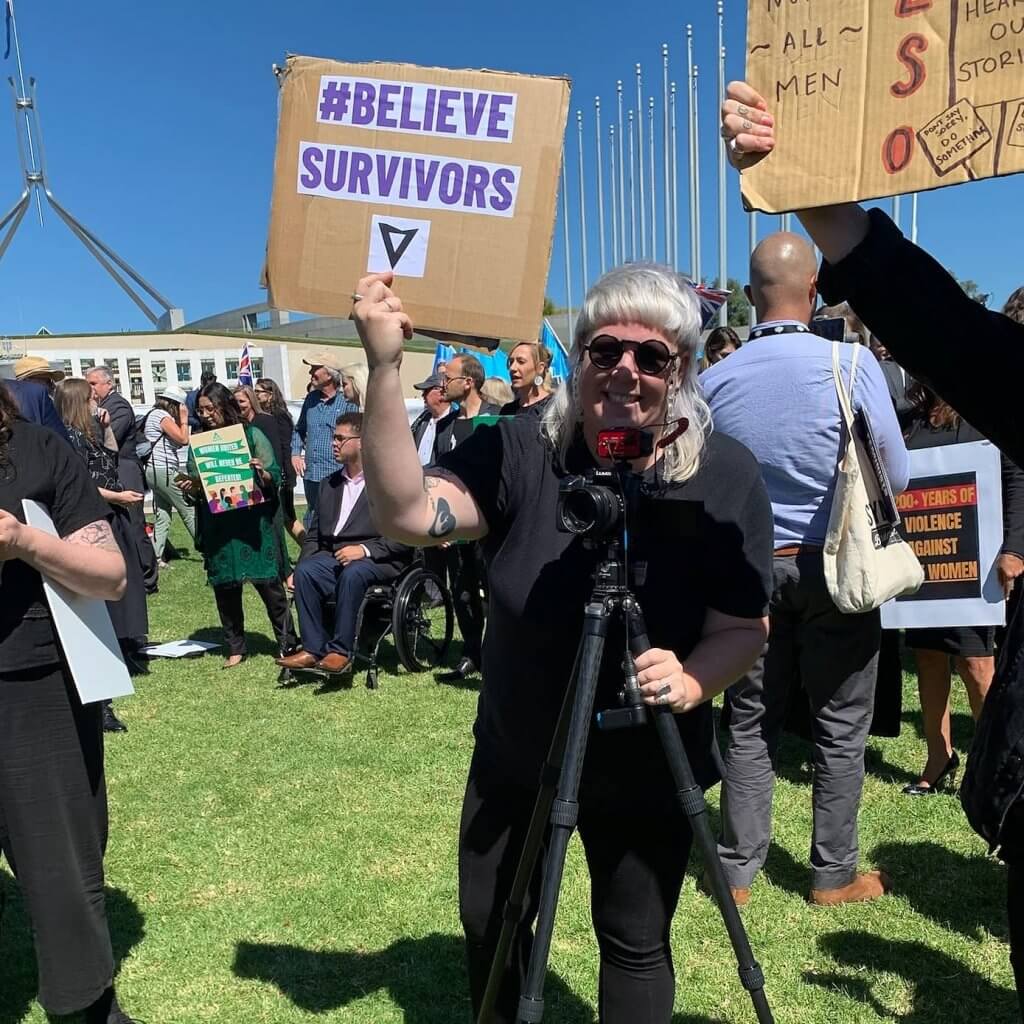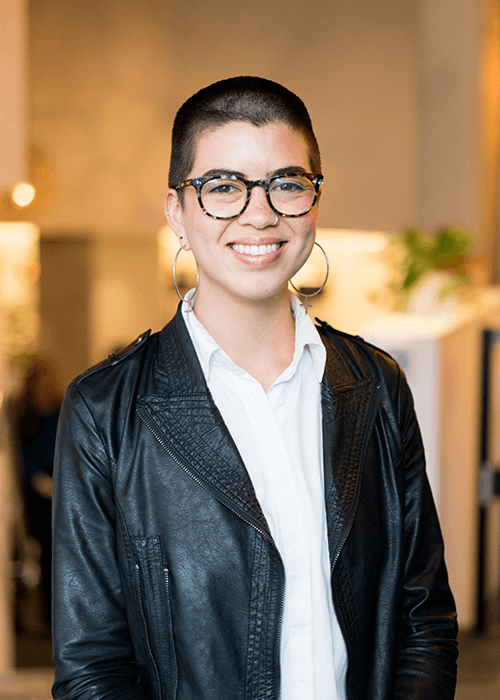The timing is equally horrific and serendipitous.
Sexual harassment, mounting evidence on ways to prevent violence, young people and consent, which all boil down to a lack of gender equality in Australia, are rightfully and yet unrelentingly under the microscope of the media and social discourse right now. Rumours of a Budget that is going to be more gender-responsive (or “women friendly” as the press report) are fuelled by early leaks.
These leaks include the government reinstating $57 million to address a long-standing equal pay disparity in the homelessness services sector, a largely feminised sectoring supporting a majority of women and their children, a 2 per cent housing deposit for single parents (a cohort made up of mostly single mothers) that can also be interpreted as a 98 per cent mortgage – and if this is a way for a bank to approve a mortgage for a single woman, we are suitably shocked – and funding for domestic violence prevention will more than double to at least $680 million, with no further details until Budget lock-up on Tuesday night.
Ironically, during May’s Domestic and Family Violence Prevention Month, you may start to wonder if mother earth is aligning the stars for some serious action on men’s violence against women and its drivers. Throw in a housing crisis and a pandemic both impacting women in disproportionate ways and the impending budget night reveal is feeling more like a MAFS finale for women and anyone that cares about them. What can a government do to drive economic recovery and end violence and gender inequality? I just wish we knew…

My name is Bobbie and I’m the Senior Manager of Advocacy at YWCA Australia, a women’s specialist service and global young women’s movement for over 140 years. Potential commitment to furthering gender equality is something as an advocate and professional feminist I can get behind every day of the week and twice on Sunday, if there’s a rally.
It’s unavoidable to access media in 2021 without being confronted by violence against First Nations people, women and LGBTIQ people, whether in their homes, in interactions with the police or at work. Moments not marred by horror-like reality are few and far between given my area of work, so it can be difficult to get perspective on looking back over the last 15 years as an evolving intersectional feminist leader in the sector and not be amazed by how far public and social consciousness has risen on issues like domestic violence, consent and respectful relationships education, bystander intervention, men’s behaviour change and how much more we must do.
These laurels weren’t built for resting. The gender equality fight is inextricably linked to racial equality and that fact couldn’t be clearer as lives are lost in homes and jails with alarming regularity. There is so much more we need to do to address structures, stereotypes and systems built on harm.
Recent news of young people’s access to national evidence-based support and education being used as a political bargaining chip is an example of failure to authentically include young people in decisions that impact them, a critical part of an intersectional response. Young women and gender diverse young people in particular have been leading advocacy and activism on preventing sexual violence. And my top tip is – just listen to young people and the experts that support them. They know what works and what titanic reference to drop because a young person isn’t a 37-year-old elder millennial holding onto their pop culture references like we hold onto our budget purse strings.
Young people are the experts in their own lives. It’s a great budget saver to cut out dollars spent on unnecessary consultancy firms, or inappropriate, yet expensive national education resources. Who knew someone with such a large Vans sneaker collection could provide such solid national budgeting advice? Fin Review, hit me up!
Luckily for me and my obtuse spending habits, I’m far from alone in my thinking, in the drive for action, or in wanting a deeper analysis on the Budget measures introduced. Housing and domestic violence, two huge issues affecting women, are often relegated to state responsibility or reliant on Commonwealth funding.
While we welcome the announcement of guaranteed equal pay funding for homelessness services that secures 500 critical jobs, there is still very much a housing crisis with no end in sight. There is no National Housing Strategy and no commitment to building new social and affordable housing. The reality is that we need $7 billion to urgently commit to 20,000-30,000 dwellings. Add to this the disconnected, short term-funding available for violence prevention, and we are quite rightly cynical about the devil in the detail.
Early analysis of the “women-friendly” announcements are alarming, because accessing superannuation to buy a house when we already have such a huge gendered super gap is very much like Afterpaying your house – and we’ve all regretted an ASOS purchase of that nature! From discussions of single women that have bought their own homes, getting a bank to lend you money on even a hefty single income is part of the patriarchy and colonialism that lives in our banks. It echoes YWCA’s history – not so long ago, we supported women to access independent home loans because you couldn’t have one without a husband. Shame!
Emalia is a member of YWCA’s Young Women’s Council and a CBF (Cyber Feminist) member who lives, works and plays on palawa land, lutruwita/Tasmania. She is a community development worker and practicing artist.
Emalia
I’m with Bobbie – it might seem a bit weird to be excited by an upcoming Federal Budget night (I’m not usually someone who wants to crunch through numbers or Federal reports on a Tuesday evening). But Budget night is where the government has an opportunity to galvanise and give a strong response to the very obvious gender-related impacts we’ve seen since colonisation in this country, impacts that have only been exacerbated and compounded by the pandemic.
Sure, the Federal Budget isn’t the most thrilling topic for most people, and it’s not designed to be accessible or easily understood. However, it is critical to get to grips with in order to understand where the money in Australia goes because it affects every area of our lives. With so many economically privileged countries blocking ease of vaccine access and distribution for everyone else, including our own, the realisation of an economically and socially recovered world is still very distant. The Budget is a crucial opportunity for us to try to get it right, or at least drastically better, especially for young women. It’s so important we made some videos to better understand the budget….

Really, a gendered analysis of the Budget is a no-brainer! It would implement the Government’s gender equality commitments of increasing women’s safety, strengthening women’s economic security and supporting more women into leadership. Women in Australia need a beacon of policy light, especially after the past few months. We need to feel that we weren’t just Marching 4 Apathy to fill in time while waiting for another boring #BlokeBasedBudget.
In practice, intersectional and gender-responsive budgeting is a set of tools and processes that analyse the gender-differentiated impacts of Budget and revenue measures. Basically, it helps analyse the impact of a budget on all Australians not just the ‘average’ ones. ‘All’ is the operative word here – we’re not asking for governments to create a Budget for women, but a Budget that equitably distributes the benefits across genders.
Professor Rae Cooper from The University of Sydney Business school said, ‘Women have been profoundly impacted by the pandemic. This has played out in three key ways. First, women have been the frontline of the crisis in highly feminised jobs like nursing, early childhood education and in food retail. They have kept us safe and the economy running. Second, women have lost more jobs and more hours, and therefore more pay, than men have as a result of the crisis, because of the sectors and the jobs hardest hit. This will play out in lifelong savings and the early access to super compounds this. Third, women have picked up even more of the unpaid work at home because of school closure and home learning. All of this has made the labour force more unequal, and we will feel echoes of it for years unless we take action now.’
I don’t need to tell you that in society, women take on the majority of care roles.
I’m going to jump on the armchair economist bandwagon with Bobbie and say that this is also a huge saver for the government. The flipside is that women end up paying for it across their whole lives.
Young women (like me) play a crucial role in the Australian economy. Overwhelmingly, young women work in lower status and lower paid social work/aged/hospitality/retail jobs and are statistically most likely to be experiencing domestic violence or housing insecurity. It just makes sense that this is recognised and reflected in the government’s spending priorities.
We’re not alone in wanting a better Budget. The Equality Rights Alliance, one of six national Women’s Alliances and their 64 NGO and social enterprise members (a coalition of gender equality advocates and organisations) lay this out in their pre-budget submission: ‘It is imperative that Australia’s Federal Budget is responsive to the gendered nature of the COVID-19 crisis and is designed to optimise the role gender equality can play in Australia’s economic recovery.’
If we had a gender responsive Budget, we’d see an increase in Jobseeker payments, the majority of which go to women; see commitment to long-term coordinated investment in primary prevention and a major uplift in the related workforce capacity to address the drivers of violence; more houses and additional support for women’s specialist homelessness services; and women being supported into leadership roles (not worrying about being sexually assaulted at work would also be high on the list, but maybe we can work on that for 2022 when the Respect at Work recommendations are embedded – you know, baby steps).
The reality is that we can end violence in a generation and that gender equality is achievable. But to reach that, more political leadership in this area is essential.
The best and most immediate way to show leadership? Putting our money where our mouth is and creating a Budget that responds to women and others marginalised by the systems and structures we uphold.
This is all possible and we have the evidence and the means to do better, so let’s hope we’re about to hear Australian politicians commit to #BuildABetterBudget.
Join us on Twitter with some budget-conscious snacks (no avo on toast for us!) as we unpack Tuesday’s Budget, and join YWCA’s CBF here to become part of the intersectional feminist movement for change.





[…] Read one of their pieces of writing for the YWCA here. […]